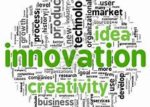When we think of wireless it is natural to wonder “which one – cellular, Wi-Fi, BLE?” Our phones support everything but those are pricey devices. What if we wanted the same combo wireless option in a low-cost IoT device, maybe something that only need to send a small amount of data periodically? Logistics applications are a good example.… Read More
Tag: bernard murphy
Lip-Bu Hyperscaler Cast Kicks off CadenceLIVE
Lip-Bu (Cadence CEO) sure knows how to draw a crowd. For the opening keynote in CadenceLIVE (Americas) this year, he reprised his data-centric revolution pitch, followed by a talk from a VP at AWS on bending the curve in chip development. And that was followed by a talk by a Facebook director of strategy and technology on aspects of… Read More
Data Management for the Future of Design
Data management is one of those core technologies which is absolutely essential in any professional design operation. You must use a data management system; you just want it to be as efficient as possible. Most of us settled on one of a few commercial or open-source options. The problem seemed more or less solved. As usual in chip … Read More
Quick Error Detection. Innovation in Verification
Can we detect bugs in post- and pre-silicon testing where we can drastically reduce latency between root-cause and effect? Quick error detection can. Paul Cunningham (GM, Verification at Cadence), Jim Hogan and I continue our series on novel research ideas. Feel free to comment.
The Innovation
This month’s pick is Logic Bug Detection… Read More
Netlist CDC. Why You Need it and How You do it.
The most obvious question here is “why do I need netlist CDC?” A lot of what you’re looking for in CDC analysis is really complex behaviors, like handshakes between different clock domains, correct gray coding in synchronizing FIFOs, eliminating quasi-static signals and the like. Deeply functional, system-level intent stuff.… Read More
Major Hardware Security Initiative Adds Tortuga Logic
You can update ..Generally, I’m a fan of letting market forces figure out best solutions to whatever evolving needs we may have, but I’m enough of a realist to accept that’s not a workable answer to every need. Some problems need a top-down fix. However, we can’t expect policymakers or industry consortia to create compliance demands… Read More
Interconnect Basics: Wires to Crossbar to NoC
To many of us, if we ever think about interconnect on an SoC, we may think delay, power consumption, congestion, that sort of thing. All important points from an implementation point of view, but what about the functional and system implications? In the early days, interconnect was very democratic, all wires more or less equal, … Read More
RISC-V SDKs, from IP Vendor or a Third Party?
Like many of us, I’m a fan of open-source solutions. They provide common platforms for common product evolution, avoiding a lot of unnecessary wheel re-invention, over and over again. Linux, TensorFlow, Apache projects, etc., etc. More recently the theme moved into hardware with OpenCores and now the RISC-V ISA. All good stuff.… Read More
WEBINAR: Security Verification of Root of Trust for Xilinx
Tortuga Logic is hosting a webinar on Tuesday, August 18th from 12 to 1PM PDT, in which Xilinx will present their experiences in using the Tortuga Logic Radix-S and Radix-M products for security verification of root of trust in their advanced SoC FPGAs. REGISTER HERE to attend the webinar.
SECURITY CHALLENGES
In general security… Read More
Structural CDC Analysis Signoff? Think Again.
Talking not so long ago to a friend from my Atrenta days, I learned that the great majority of design teams still run purely structural CDC analysis. You should sure asynchronous clock domains are suitably represented in the SDC, find all places where data crosses between those domains that require a synchronizer, gray-coded FIFO… Read More











